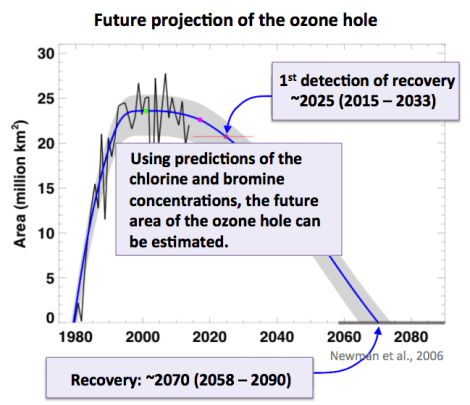Remember when the world came together to save the ozone layer — even Ronald Reagan and Margaret Thatcher? The Montreal Protocol, a treaty that went into effect in 1989, curbed the use of CFCs and other chemicals that tear up the planet’s UV-absorbing sheath of ozone. But that was nearly a generation ago — and things still haven’t been fully patched up in the lower stratosphere.
The ongoing fragility of the ozone layer reminds us how long it can take for atmospheric conditions to stabilize after we have screwed them up. The L.A. Times reports:
In 2006, the ozone hole grew larger than ever. It reached a similar extent in 2011, before shrinking to its second-smallest size in 2012. Naturally occurring meteorological conditions were mostly responsible for those fluctuations, two NASA studies found.
Over the next two decades scientists expect the ozone hole to continue to vary widely.
“It’s not going to be a smooth ride,” said Susan Strahan, a senior research scientist at NASA. “There will be some bumps in the road, but overall the trend is downward.”
Not until chlorine falls below 1990s levels, a milestone scientists predict for sometime between 2015 and 2030, will the phase-out of ozone-depleting substances begin to have a discernible effect.
Prognosis for a full recovery? NASA says it will happen around 2070.
It’s worth remembering that the chemicals that destroyed the ozone layer can persist in the atmosphere for decades. Carbon dioxide pollution, the main cause of global warming, can persist in the atmosphere for centuries.



